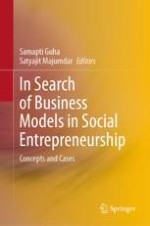2021 | OriginalPaper | Buchkapitel
10. Community-Based Business Model of Indigenous People: Indigenous Entrepreneurship, Innovation and Value Proposition
verfasst von : Jackson Khumukcham
Erschienen in: In Search of Business Models in Social Entrepreneurship
Verlag: Springer Singapore
Aktivieren Sie unsere intelligente Suche, um passende Fachinhalte oder Patente zu finden.
Wählen Sie Textabschnitte aus um mit Künstlicher Intelligenz passenden Patente zu finden. powered by
Markieren Sie Textabschnitte, um KI-gestützt weitere passende Inhalte zu finden. powered by
